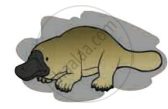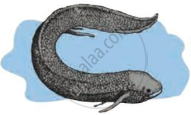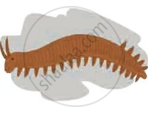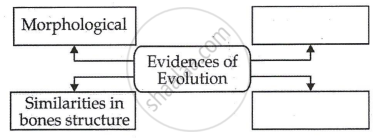Advertisements
Advertisements
Question
Human tailbone is a vestigial organ. Explain.
Solution
The vestigial organ is the remains of a structure that was functional in some ancestors but is no longer functional in the organisms.
In humans, many vestigial structures show a relationship to other mammals including the primates. Ancestors of human were having well-developed tailbone as their adaptation was arboreal. But gradually humans got adapted to the terrestrial habitat. So, their human tailbone is reduced (vestigial).
APPEARS IN
RELATED QUESTIONS
State the connecting links between Peripatus with Annelida and Arthopoda.
What are vestigial organs?
Explain with an example for the given, how the following provides evidence in favor of evolution in organisms :
Homologous organs
Study the following statements:-
I. Wings of birds and wings of bats are homologous organs.
II. Wings of birds and wings of insects are modified forelimbs.
III. Wings of birds and wings of insects are analogous organs.
IV. Wings of birds and forelimbs of horse are homologous organs.
The correct statements are
(A) I and II
(B) II and III
(C) III and IV
(D) I and IV
Which of the following pairs of two vegetables represent the correct homologous structures?
(A) Sweet potato and potato
(B) Sweet potato and tomato
(C) Carrot and potato
(D) Radish and carrot
An example of homologous organs is
Name the scientists who Discovered the fossil of Australopithecus
Name any two temporary embryonic structures in vertebrates which provide evidence for evolution.
Out of bacteria, spider, fish and chimpanzee, which organism has a better body design in evolutionary terms? Give reason for your answer.
The organs which perform different functions but have the same basic structure are known as :
(a) homologous organs
(b) analogous organs
(c) homolytic organs
(d) analytic organs
Wing of an insect and forelimb of a bird are :
(a) analogous organs
(b) analeptic organs
(c) homologous
(d) homophobic organs
One pair of organs in the following animals are not homologous. This is :
(a) forelimbs in humans and lizard
(b) forelimbs in lizard and frog
(c) wings in butterfly and bat
(d) wings in bat and bird
There are five animals A, B, C, D and E. The animal A uses its modified forelimbs for flying. The animal B uses its forelimbs for running whereas the animal C uses its forelimbs for grasping. The animal D can live on land as well as in water and uses its forelimbs to prop up the front end of its body when at rest. The animal E which respires by using spiracles and tracheae uses wings for flying but its wings are analogous to the modified forelimbs of animal A.
(a) What could the animals A, B, C, D and E be?
(b) Why are the forelimbs of animals A, B, C, D called homologous organs?
(c) What does the existence of homologous organs in animals A, B, C and D tell us about their ancestors ?
(d) Why are the modified forelimbs of animal A and the wings of animal E called analogous organs?
(e) State whether animals A and E have a common ancestor or not.
Select a set of homologous organs from the following:
(A) Wings of a bat and wings of a butterfly
(B) Wings of a pigeon and wings of a bat
(C) Wings of a butterfly and wings of a pigeon
(D) Forelimbs of a duck, forelimbs of a cow and forelimbs of a lizard
You have potato, carrot, radish, sweet potato, tomato and ginger bought from the market in your jute bag. Identify two vegetables to represent the correct homologous structures.
(A) Potato and tomato
(B) Carrot and tomato
(C) Potato and sweet potato
(D) Carrot and radish
Write short notes based upon the information known to you.
Connecting link
Choose the correct option of the following question:
Wings of Insect and Birds are examples of :
_____________ is a vestigial organ in human beings.
Find an odd one out.
Find an odd one out.
Give scientific reason.
Peripatus is said to be the connecting link between Annelida and Arthropoda.
Give scientific reason.
Duck-billed platypus shows relationship with mammals.
What is carbon dating?
Observe the given images and answer the following questions.

- Which evolutionary evidence does it indicate?
- What does it prove?
- State another example of evolutionary evidence.
Which evidence of evolution is shown in the given picture? Explain the importance of this evidence.

Explain any five types of evidence that support the theory of evolution.
Write the answers to the questions by observing the figure below.
 |
 |
 |
| (a) | (b) | (c) |
- Write the name of the animal ‘(a)’ in the figure.
- Write the name of the animal ‘(b)’ in the figure.
- Write the name of the animal ‘(c)’ in the figure.
- Which evolutionary evidence is illustrated by this figure?
- Write the definition of that evidence for evolution.
Biogenetic law states that ______.
Homologous organs and vestigial organs are examples of ______ type of evidence in evolution.
Study of fossils is ______.
The process of mating of individuals, which are more closing related than the average of the population to which they belong is called ______.
Which is not a vestigial organ in a man?
Analogous organs arise due to ______.
How do we compute the age of a fossil?
Give a scientific reason.
Morphological evidences suggest that dog, sheep and wolf have a common origin.
Find the odd one out:
Evolutionary convergence is the development of a ______.
Complete the following conceptual picture:

Write names of some vestigial organs in the human body.
